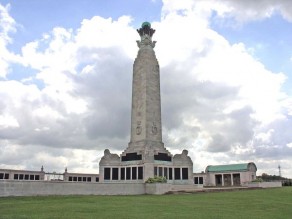Country
United Kingdom
Locality
Kent
Identified Casualties
18613
Visiting Information
As a result of constant vandalism at the Memorial, the Commonwealth War Graves Commission has had to arrange for it to be regularly patrolled and public access limited to the period from 08.30 to 17.00. Should for any reason the Memorial be closed during the stated hours, please telephone the Guard Room at Brompton Barracks on 01634 822442 who will arrange for the gates to be opened. Any inconvenience to visitors is greatly regretted.
Local Information
From the Brompton Barracks Chatham - At the traffic signals turn right onto Globe Lane - A231 (signposted 'Historic Dockyards'). Keep in left hand lane then turn left onto Dock Road (signposted Gillingham). At roundabout take the 2nd exit onto Wood Street - A231 (signposted Gillingham). Turn Right on Mansion Row (The memorial is signposted from here), then 1st left on Sally Port Gardens and finally 1st right on King's Bastion. Follow road through the housing estate, the car park to the memrial is at the end of this road. The Memorial overlooks the town of Chatham and is approached by a steep path from the Town Hall Gardens. A copy of the Memorial Register is kept in the Naval Chapel of Brompton Garrison Church and may be consulted there. The keys to the church are held at the Gate House, which is always manned. Copies of the Memorial Register may also be consulted at: Chatham Library - Tel: 01634 843589 Medway Archives & Local Studies Centre - Tel: 01634 332714





